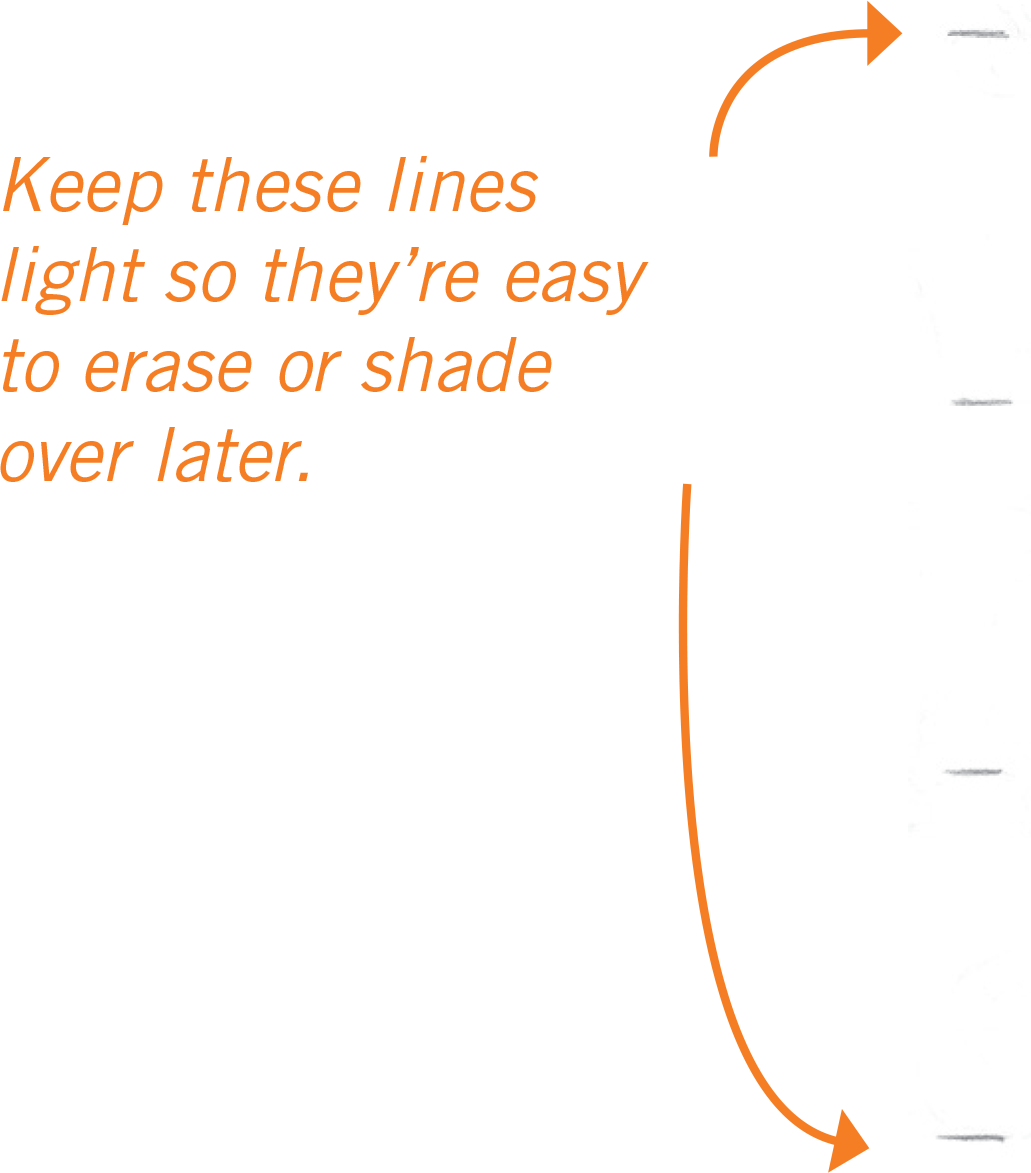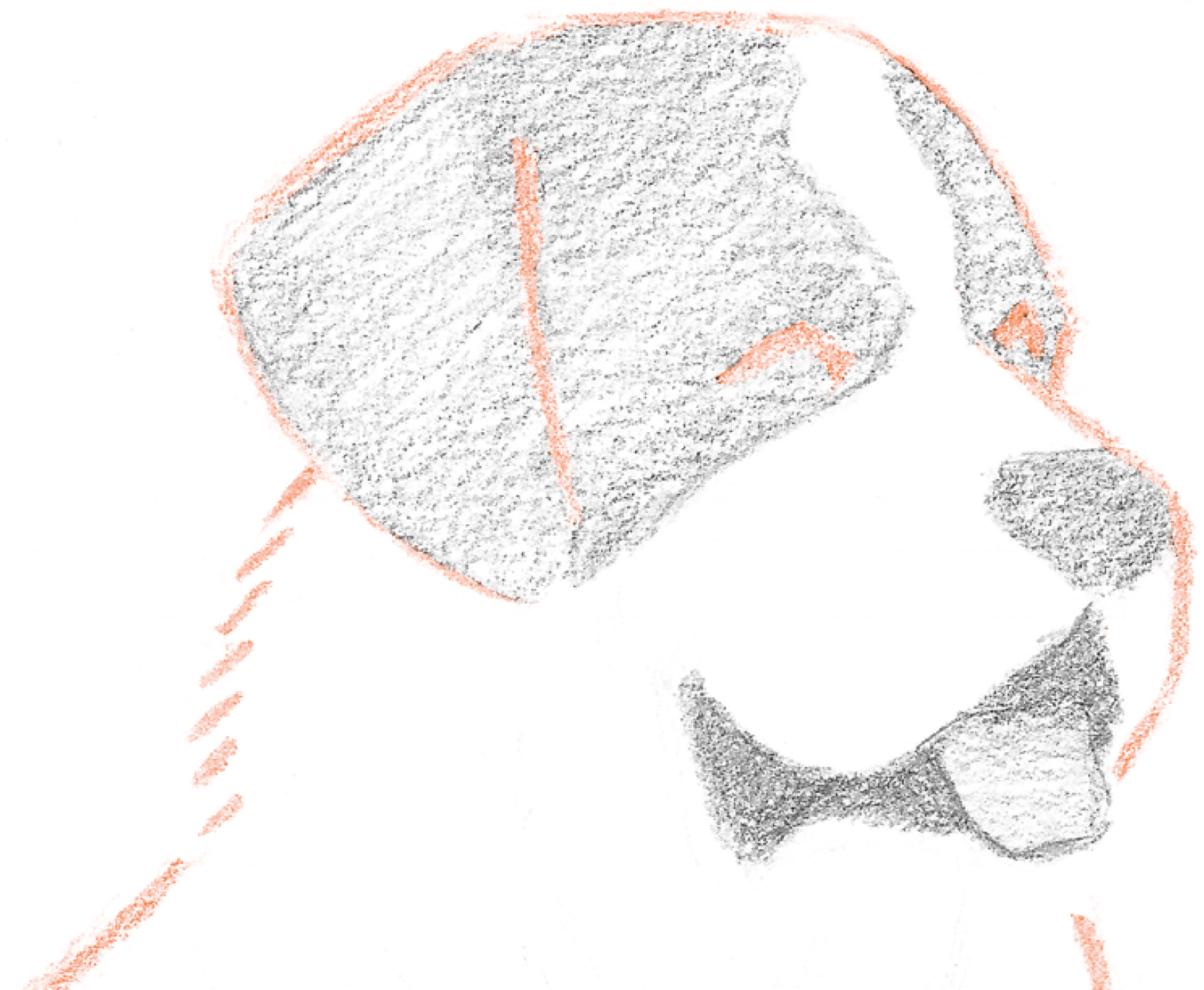Steps: 16
Difficulty: 
| how to draw a | saint bernard |
Steps: 16
Difficulty: 
The Saint Bernard is a very large and friendly breed of dog. Its thick coat originally protected it from the snow of the Swiss Alps. This dog has long hair, but a shorthair variety is also popular. |

|
1 Make four short lines to mark vertical sections 2 inches (5cm) apart on the right half of your paper. |

|
2 Using the marks you made in step 1, draw the main edges of the dog’s head. Draw short repeating lines at the left to indicate the thick neck fur. |

|
3 Draw the shape of the dog’s back and chest with broken lines. |

|
4 Complete the main shapes of the dog’s body. |

|
5 Draw the angled edges of the dog’s upper eyelids, nose, and mouth. |

|
6 Draw light outlines of the dark fur, mouth, and tongue and then shade them. |

|
7 Shade the dog’s muzzle and neck with short repeating lines. |

|
8 Shade the dark fur on the dog’s back as well as the shadow on the light fur of the dog’s chest. |

|
Fun Fact
Adult Saint Bernards can weigh up to 200 pounds (90kg).
9 Continue shading the light and dark areas of the dog’s body and add the shadow. |

|
10 Intensify the shading on the head, and add fur texture at the edge with short, thin strokes. |

|
11 Draw the pupils of the eyes, and add the dark shading of the lower lid. |

|
12 Detail the nose with short dark lines at the side and center, and add the nostrils. Darken part of the dog’s mouth, and shade the tongue. |

|
13 Darken the shading of the dog’s back, and add angled shading to the chest. |

|
14 Add dark details to the dog’s tail and rear leg, and the feathery hair of the front legs. Detail the shadow, too. |

|
15 Erase some of the feathery hair of the front legs. |

|
16 Add the darkest shading angling at the dog’s eyebrows, nostrils, and mouth. |

|